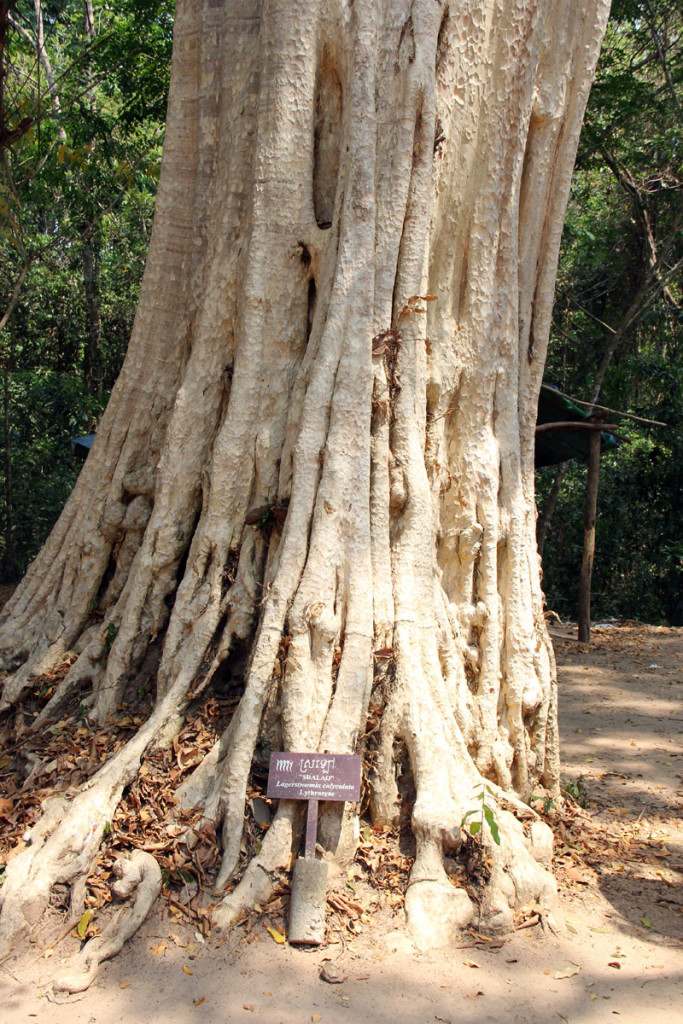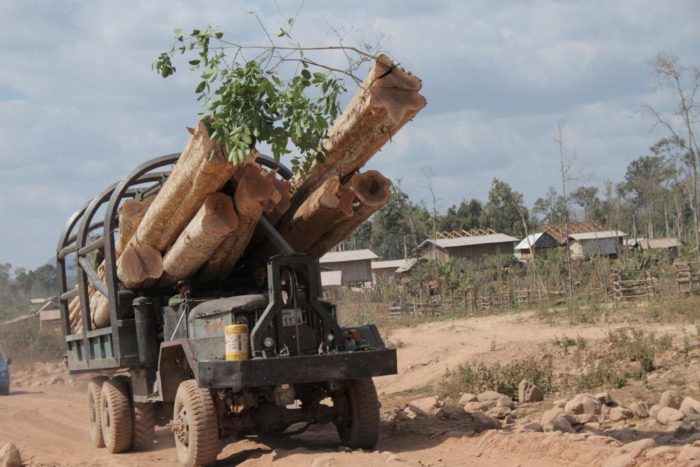The end for one of the last giants still standing in Asia’s forests?



Tall and graceful, with a pale almost luminous bark, Lagerstroemia (Lagerstroemia spp., Lythraceae) – commonly known as crape myrtle or crepe myrtle – are some of the more distinctive tree species in the forests of South-East Asia. These ghostly giants can reach heights of 40m or more, towering over most other plants and providing essential habitat for a number of tree-dwelling species including hornbills, pangolins and flying squirrels.
Historically, Lagerstroemia would be left relatively untouched in selectively logged forests, with timber traders preferring to go after the higher-value species such as balau (Shorea spp.) and the rosewoods (dalbergia spp.). This pattern has resulted in Lagerstroemia becoming one of the more abundant trees in the region’s lowland forests and one of the few large hardwood species remaining.

Lagerstroemia calyculata, by Codex
But this could soon be a thing of the past.
EIA has been investigating forest destruction and timber smuggling in Laos since 2007. For the first time, a recent trip to the country has revealed a booming trade in Lagerstroemia that threatens to strip the forests of one of its last giants – the harvesting EIA witnessed looked to be indiscriminate and rampant; even relatively small Lagerstroemia trees had been felled.
Common trade names for Lagerstroemia include ‘Pyinma’ (Myanmar) and ‘Bằng Lăng’ (Vietnam). Smaller species in this genus are traded as ornamental trees, while the larger ones (including those seen by EIA in Laos, which is most likely to be L. calyculata), are traded for their timber. The timber is used to make veneers, flooring and furniture, and internet searches of traders in neighbouring Vietnam have revealed a large number of companies advertising ‘Bằng Lăng’ wood products for sale. EIA witnessed several logging trucks laden with this species on their way into Vietnam.
Relatively low demand for Lagerstroemia, combined with the difficulties in extracting large tree species from forests, probably afforded it some protection in the past. This has now changed and the rapid mechanisation of the timber industry, the spread of agro-industrial plantations across the region and the booming furniture industries in China and Vietnam have resulted in timber extraction on an industrial scale. Few hardwood species are now safe from this rapacious trade.

Truck transporting Lagerstroemia logs, Laos (c) EIA
With the ongoing declines in the Mekong’s higher-value hardwoods, trade in Lagerstroemia is likely to grow even further as the multi-billion dollar timber industries in China and Vietnam continue to seek alternatives. Laos has some of the largest natural forest cover remaining in the Mekong region but much of it is already degraded from decades of mismanagement by Government agencies and, in part, by poorly considered projects by multi-lateral donor agencies.
Lagerstroemia are often one of the few trees left in selectively logged forests capable of growing large enough to form hollows and cavities. Several seed-dispersing animals, such as hornbills, depend on these hollows to successfully breed. The survival of these animal species is intricately linked to that of Lagerstroemia and other large hardwoods. The loss of them from the region’s forests will have significant impacts on these species, and on the ability of these forests to naturally regenerate, post-logging. This has obvious implications for the ecological integrity of these forests and their ability to provide important ecosystem services, such as fresh clean water.
Lagerstroemia is clearly being targeted by traders as other hardwoods approach commercial and biological extinction. The harvesting and trade in this tree could well represent the death-knell for the country’s already embattled forests; very soon, Laos will have few large trees left. This sorry situation has been created by weak forest governance, corruption and a rent-seeking culture among Laos’ authorities.
The country’s law bans the export of raw logs but, as EIA has repeatedly shown, this rule is routinely flouted by well-connected individuals and companies.
EIA’s latest findings indicate a cascade effect whereby tree species further down the value chain are now being heavily logged, with dire implications for the country’s shrinking forests. Laos and Vietnam must cooperate to stop the illicit cross-border timber trade as a matter of urgency.